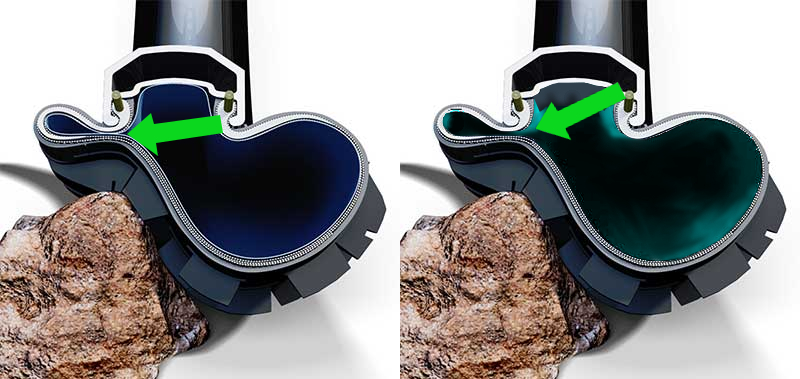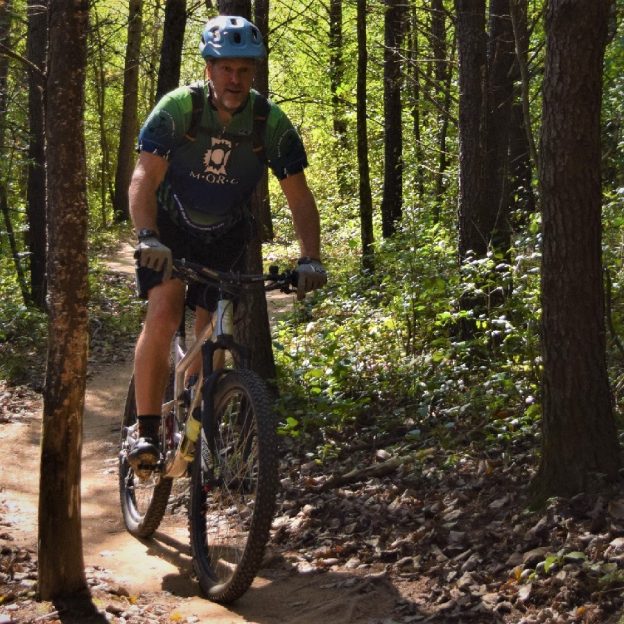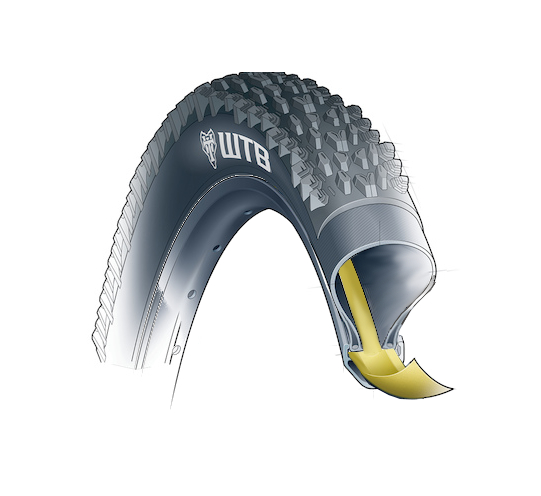by John Brown, HaveFunBiking.com
In the spring of 1999 the french rim maker MAVIC launched the first viable bicycle tubeless system. By working closely with their french neighbor, the tire maker Hutchinson, they engineered a simple system that could give riders the benefits of larger air volume, greater traction, lighter weight and greater durability that tubeless systems offer. Since 1999, tubeless has evolved to be lighter, more serviceable, and lighter.
Now, with more bicycles coming from the manufacturer with these tires as standard equipment, please read on to see how the current family of tubeless systems can benefit you.
What are tubeless tires
Tubeless tires are exactly what they sound like, tires that use no innertubes. Specifically, these tire and rim systems use the air pressure, combined with a sealant, to keep your tires seated and inflated on the rim.
Why tubeless
There are a few reasons as to why tubeless tires have become popular. In essence, they are less prone to flats, they ride more comfortably, they are lighter and they offer better traction.
Less flats
Tubeless tires protect against the most common type of flat tire, a pinch flat. How a pinch flat works is the tire is compressed between a solid object and the rim. When compressed the rim and object work like scisors and cut a hole in the innertube. Considering tubeless tires have no innertube, they cannot pinchflat. This isn’t to say you cannot cut the tire in the same circumstance, but that is far less likely.

The innertube on the left (blue) is susceptible to pinchflats, while the tubeless setup on the right is immune.
Less weight
Innertubes are relatively heavy. The pair can easily weigh a pound. While a pound may not sound like a lt of weight, we need to consider were that weight is. Tires, tubes, and rims have a profound effect on the feel of a bike. Heavy rims, tubes or tires can make the bike feel very heavy (even if it’s overall weight is low). The reason for this is that when you pedal, the weight you are constantly accelerating, only to have it decelerate and need to be accelerated again is rotating weight (ie. Rim, tire, tube). Reducing the rotating weight will decrease the mass you need to constantly accelerate, and lead to a lighter riding bicycle.
More comfot
By doing away with the innertube, you automatically increase the air volume of the tire. This increased air volume allows for a greater degree of flex in the tire when you ride over objects. Increaseing that flex allows the bike to more comfortably float across road and trail.
More traction
Tires and tubes don’t actually play well together. A tire is built with high thread count fabrics that are designed to conform over objects, but not collapse under the efforts of turning and pedaling. That delicate balancing act is made more difficult when you introduce an innertube. An inflated innertube will press against the inner surface of the tire an hinder it from conforming over objects. This is because that pressure creates friction between the tire attempting to conform, and the tube exerting force on it. This, if you eliminate the tube, the tire is free to do what it was intended to do

Air Pressure (Green) forces the tube into the tire causing friction (Red)
Types of tubeless tires
There are two primary tubless systems. Tubeless, and Tubeless-ready. A true tubeless system (like the tires on most automobiles) requires no sealant to inflate the tire. The tire is built with a airtight material grafted to the inner surface. Tubeless-ready tires require you to use a sealant because they have no airtight material applied. Overall, the tubeless-ready tires has become more popular because they ride better, are lighter and less expensive. For all those benefits, the trade off is that a sticky solution must be installed into the tire to seal it.
What you need to go Tubeless
There are four primary items you need to go tubeless. They are a tubeless compatible rim, rim tape and valve, a tubeless-ready tire, and sealant. In many cases new bikes are coming stock with tubeless compatible rims (the largest expense) so check with your shop to see if you are already half way there.
What happens if you get a flat with a tubeless tire
In the rare instance where you do get a flat tire, you can simply remove the tubeless valve core, and install an innertube. There is a bit of added mess with the sealant, but otherwise changing a flat is simple.

